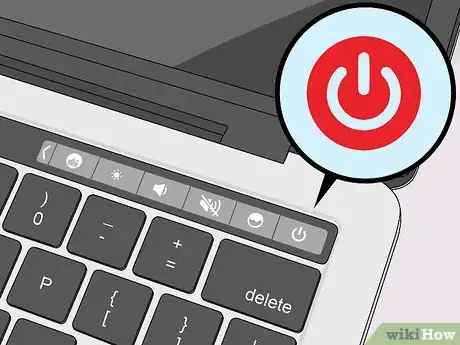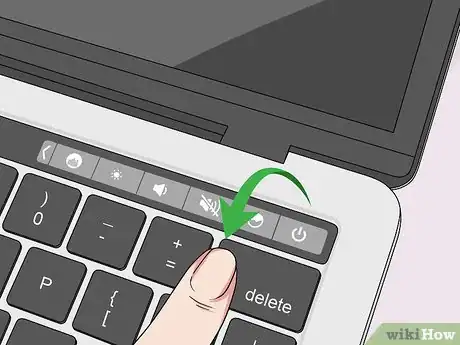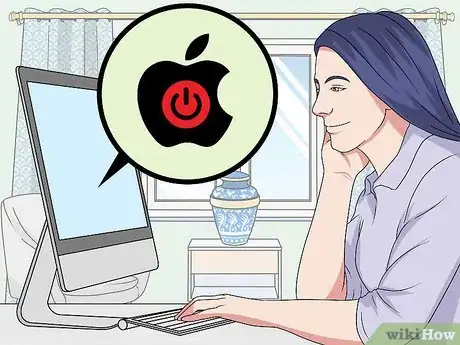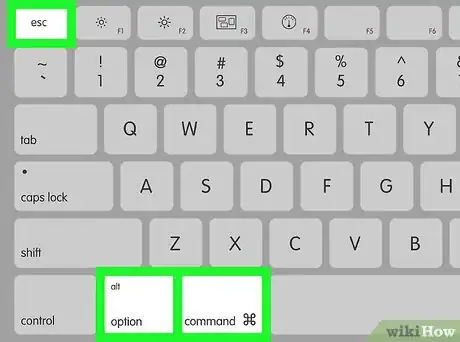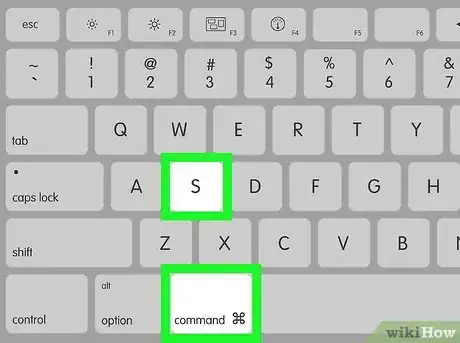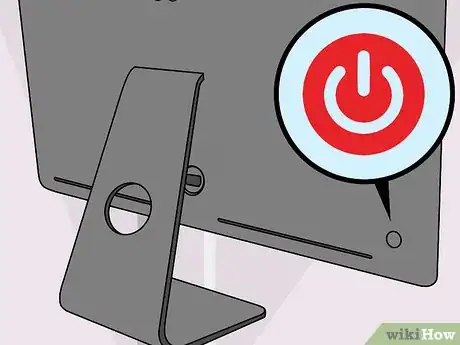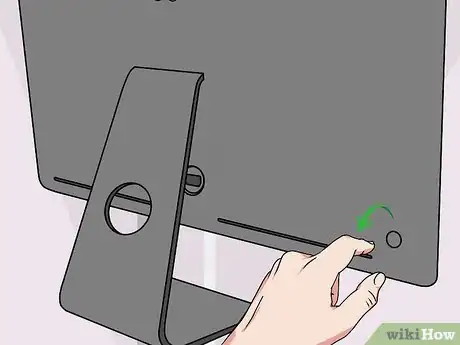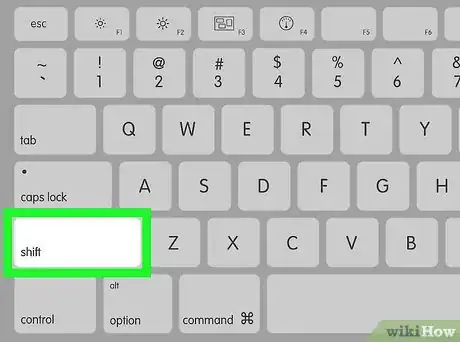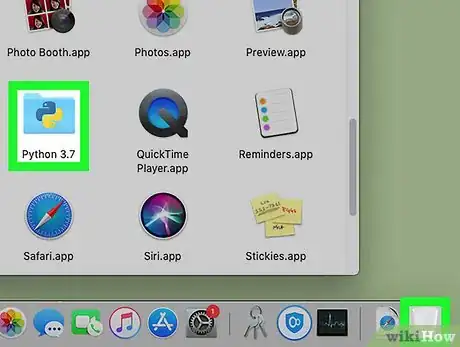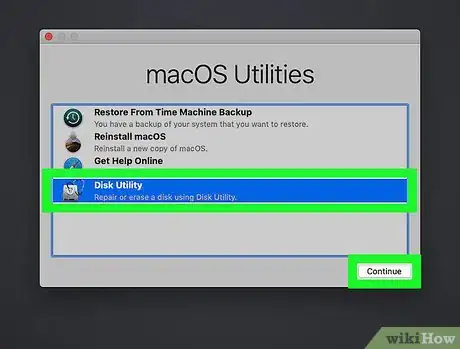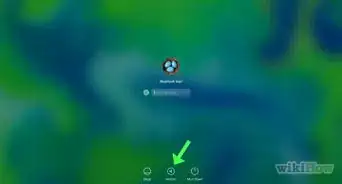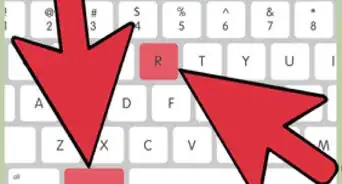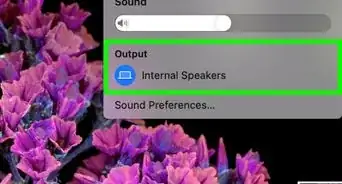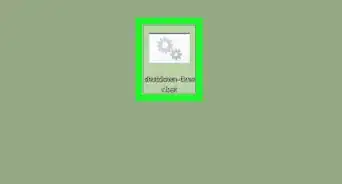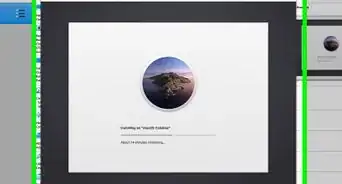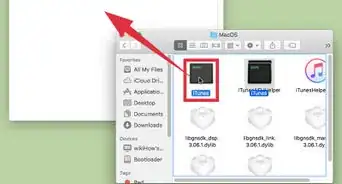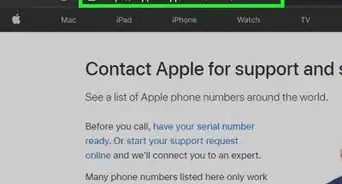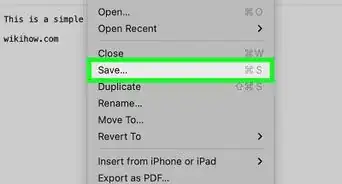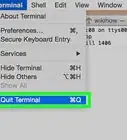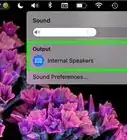This article was co-authored by wikiHow staff writer, Jack Lloyd. Jack Lloyd is a Technology Writer and Editor for wikiHow. He has over two years of experience writing and editing technology-related articles. He is technology enthusiast and an English teacher.
The wikiHow Tech Team also followed the article's instructions and verified that they work.
This article has been viewed 883,119 times.
Learn more...
Your Mac is frozen, the keyboard’s not working, and the mouse is useless. If that sounds like you, don’t worry—forcing your Mac to shut down should solve the problem. We’ll show you how to force shut down any kind of Mac. Plus, we’ve included some troubleshooting tips in case your Mac still isn’t working when you restart it.
Steps
Forcing any Mac to Shut Down
-
1Understand that force-quitting your Mac can cause problems. If you have open programs when you force-quit your Mac, the programs will be forced to close as well, which can cause you to lose unsaved work. In some cases, force-quitting may even corrupt open programs or installers.
- To be as safe as possible, try to close any open programs before you force your Mac to shut down.
-
2Find your Mac's "Power" button. Most Macs have a physical button with the "Power" icon that you can press to turn off your Mac:[1]
- MacBook without Touch Bar — The "Power" key is in the top-right side of the keyboard.
- MacBook with Touch Bar — The "Power" button is the Touch ID section on the far-right side of the Touch Bar.
- iMac — You'll find the "Power" button behind the lower-left side of the iMac's screen.
Advertisement -
3Press and hold the "Power" button. Once you've found the "Power" button, press down on it and don't release it for five seconds.
-
4Release the "Power" button after five seconds. At this point, your Mac should be off.
- If you see a prompt asking you to confirm that you want to turn off your Mac, you didn't hold down the key for long enough.
-
5Wait a minute before turning back on your Mac. This will allow your Mac to fully power down before you attempt to turn it back on.
Forcing a Frozen Mac to Shut Down
-
1Determine the severity of your Mac's condition. If your Mac is so frozen that you can't interact with any on-screen items or even move the cursor, skip the next two steps.
- If you can still interact with some of the on-screen items, you may want to try force-quitting the program that's causing your Mac to freeze.
-
2Try force-quitting an application. If your Mac froze after you opened a specific application, you can try force-quitting the application by doing the following:
- Press ⌘ Command+⌥ Option+Esc to bring up the Force Quit window.
- Click the program you want to force-quit.
- Click Force Quit at the bottom of the window.
- Click Force Quit if prompted.
-
3Try to save any open work. If you've determined that you're unable to force-quit the problematic program, try saving any in-progress work in any responsive programs. You can usually do this by pressing ⌘ Command+S while in the program's window.
- Since forcing your Mac to shut down will also cause all open programs to close, you may lose unsaved work.
- Many programs, such as those in the Microsoft Office suite, will save a backup of your work that you can restore upon restarting your Mac.
-
4Find your Mac's "Power" button. Most Macs have a physical button with the "Power" icon that you can press to turn off your Mac:
- MacBook without Touch Bar — The "Power" key is in the top-right side of the keyboard.
- MacBook with Touch Bar — The "Power" button is the Touch ID section on the far-right side of the Touch Bar.
- iMac — You'll find the "Power" button behind the lower-left side of the iMac's screen.
-
5Press and hold the "Power" button. Once you've found the "Power" button, press down on it and don't release it until the screen turns off.
-
6Release the "Power" button when the screen goes black. This signifies that your Mac has turned off.
- It may take your Mac up to a minute to finish turning off completely, so make sure that your Mac has stopped making noise before you proceed.
-
7Turn back on your Mac after a minute. Once your Mac has shut down entirely, you can press the "Power" button once to turn back on your Mac. When it finishes restarting, your Mac should be unfrozen.
- If your Mac is still frozen after restarting, try troubleshooting your Mac.
Troubleshooting Post-Restart Issues
-
1Start your computer in Safe Mode. If your computer freezes again after a forced shut down, restart it and press ⇧ Shift as soon as it begins to turn back on, then release the ⇧ Shift key when you see the Apple logo. Your computer will start in Safe Mode and attempt to repair issues with your disk.[2]
- Many applications will not work in Safe Mode. Use it for the next couple steps, then restart to return your computer to normal.
-
2Disable open on startup. Safe Mode prevents programs from opening automatically on startup. To prevent a program opening after a normal startup, follow these steps:
- Open the Apple menu .
- Click Users & Groups.
- Select your user account in the left pane.
- Click the Login Items tab.
- Select the program causing the issue.
- Click the - button below the list of programs.
-
3Uninstall a problematic program. If you have a specific program that you know is causing your Mac to freeze, uninstalling it (and reinstalling it, if you like) will solve the problem:
- Open Finder.
- Click the Applications folder (or click the Go menu and click Applications in the resulting drop-down menu).
- Find the program that keeps freezing.
- Drag the program into the Trash.
-
4Repair your disk. If your computer still has issues that don't seem tied to a specific program, follow these steps to repair your disk:[3]
- Restart your computer and hold down ⌘ Command + R as it starts up.
- Click Disk Utility on the startup screen.
- Click Continue.
- Select your startup disk and click Repair Disk.
- Wait for this to complete (it may take a while), then restart your computer.
-
5Reset your SMC. The SMC, or System Management Controller, handles many of the physical components on your Mac. An issue with the SMC can prevent your power button from working properly, or cause general slowdowns. If none of the steps above solved your problem, reset the SMC:[4]
- Laptop with non-removable battery — Shut down your computer and plug it into a power source. Using the left side of the built-in keyboard, hold down ⇧ Shift + Control + ⌥ Option while pressing the "Power" button, then release all keys, and finally press the "Power" button again.
- Laptop with removable battery — Shut down your computer. Unplug the power adapter and remove the battery, then hold down the "Power" button for five seconds. Release the "Power" button, reinsert the battery, and plug in your computer to a power source. Press the "Power" button.
- Desktop — Shut down the iMac and unplug the power cord. Wait fifteen seconds, then plug it back in. Wait five seconds, then press the "Power" button.
Community Q&A
-
QuestionWhat do I do if I can't get my cursor to move?
 Community AnswerPress and hold the power button on the computer for about five seconds until the lights go off and it stops making noise.
Community AnswerPress and hold the power button on the computer for about five seconds until the lights go off and it stops making noise. -
QuestionOn my new Macbook, the enter password area has a question mark sign. I've put in the password, but it says it's wrong. What do I do?
 Community AnswerIt looks like your Caps Lock is on. Try disabling it, then entering your password.
Community AnswerIt looks like your Caps Lock is on. Try disabling it, then entering your password. -
QuestionMy Macbook Pro retina has a vertical line on the screen. How can I remove it?
 Community AnswerUnfortunately, there's really no way to fix this without replacing your display; your screen is damaged. If you're under warranty, you can take your computer to Apple Support for a replacement. (You can do this if you're not under warranty too, but a new display is around $700 and not particularly worth it, in my opinion.)
Community AnswerUnfortunately, there's really no way to fix this without replacing your display; your screen is damaged. If you're under warranty, you can take your computer to Apple Support for a replacement. (You can do this if you're not under warranty too, but a new display is around $700 and not particularly worth it, in my opinion.)
Warnings
- You will lose unsaved data when you force your computer to shut down.⧼thumbs_response⧽
References
About This Article
1. Find your Mac's "Power" button in the upper-right side of the keyboard, on the far-right side of the Touch Bar, or on the back of the monitor.
2. Hold down the "Power" button.
3. Release the "Power" button when the screen goes black.

